The document provides definitions and examples of various EEG patterns observed in critical care settings. It defines patterns such as burst-attenuation, burst-suppression, generalized periodic discharges, lateralized periodic discharges, and ictal-interictal continuum. Examples are given through annotated EEG figures to demonstrate different patterns such as identical epileptiform bursts, generalized spike-and-wave, stimulus induced rhythmic delta activity, and electrographic seizures. The document aims to standardize terminology for interpreting critical care EEGs.
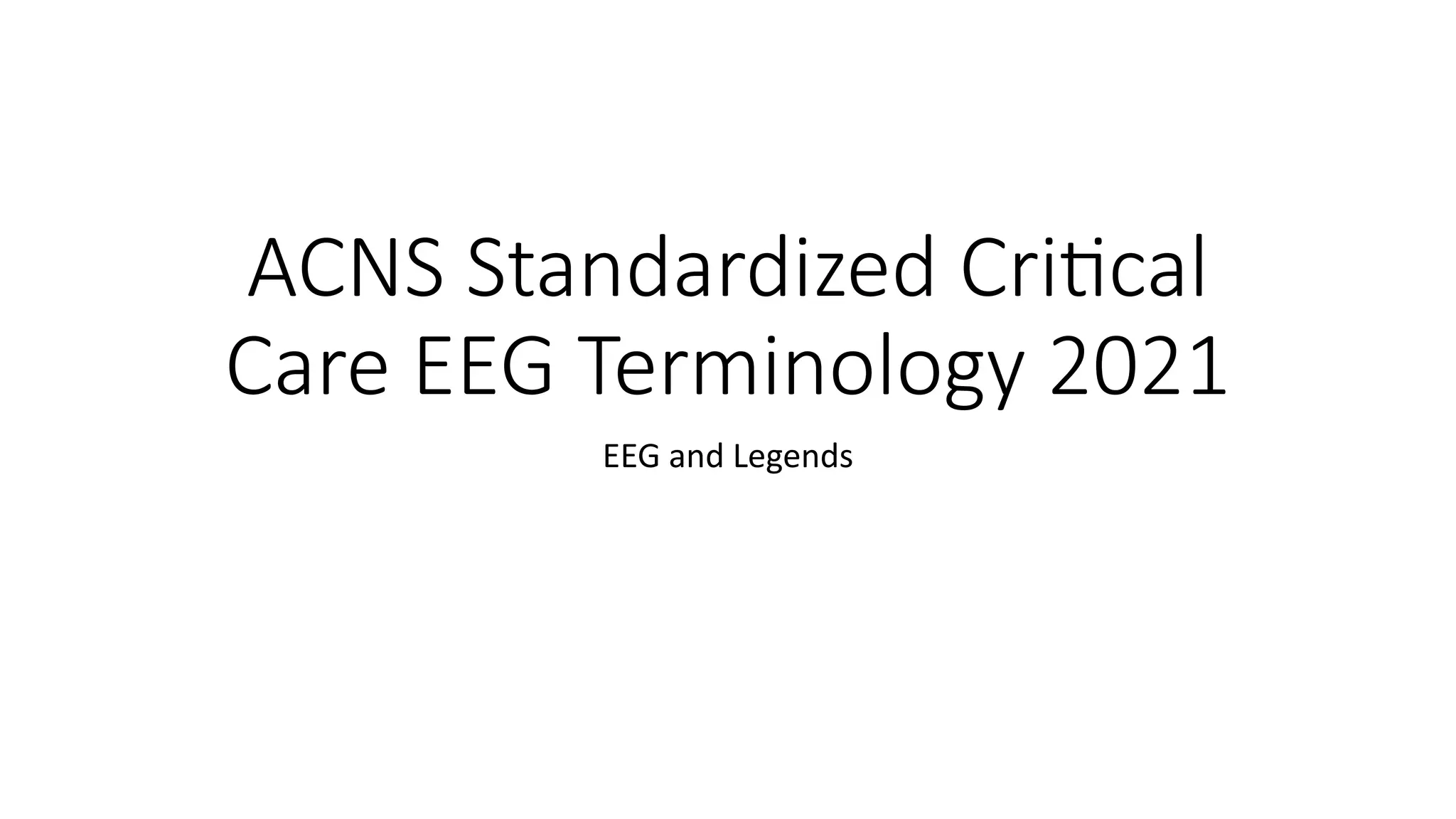
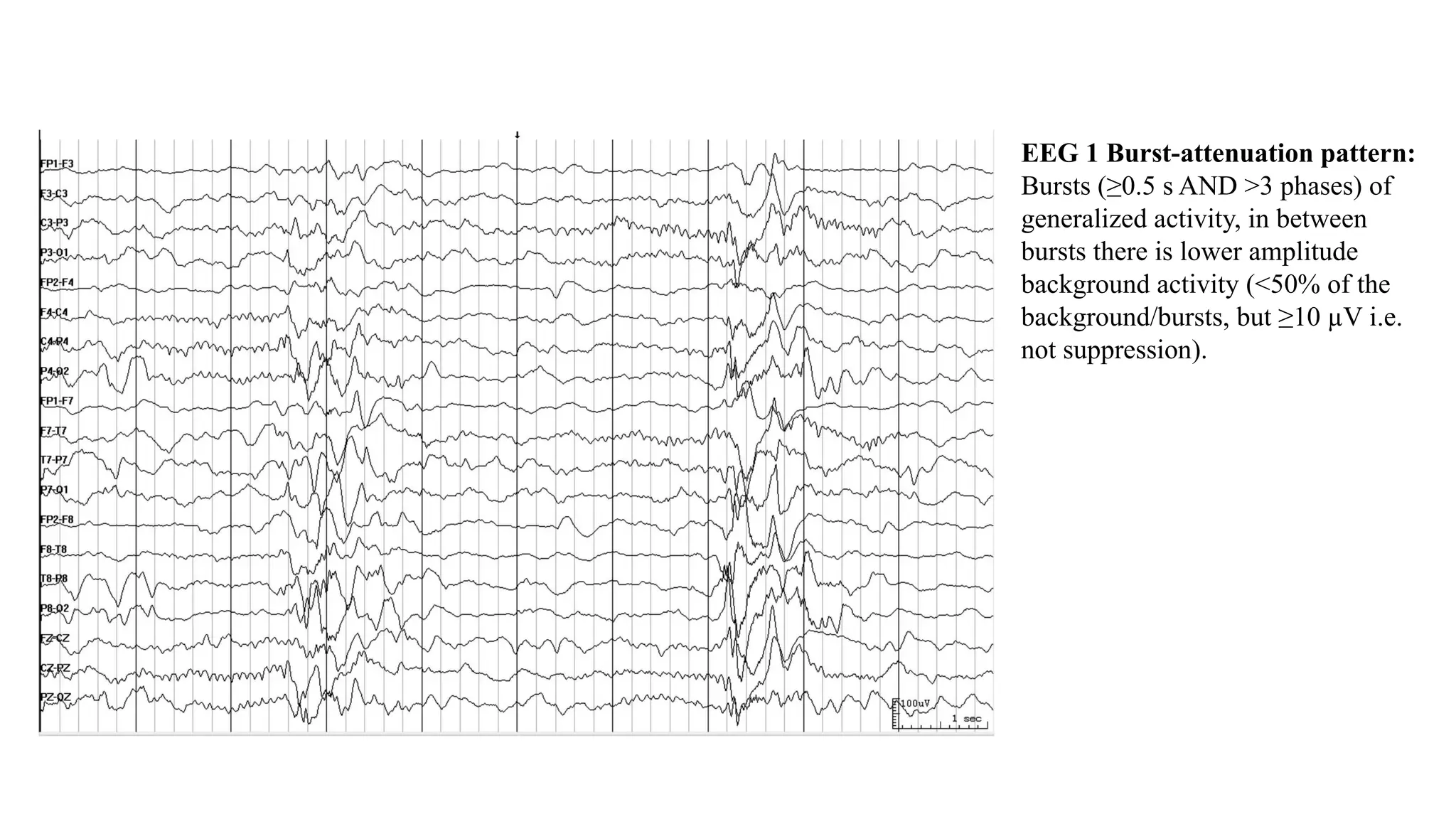





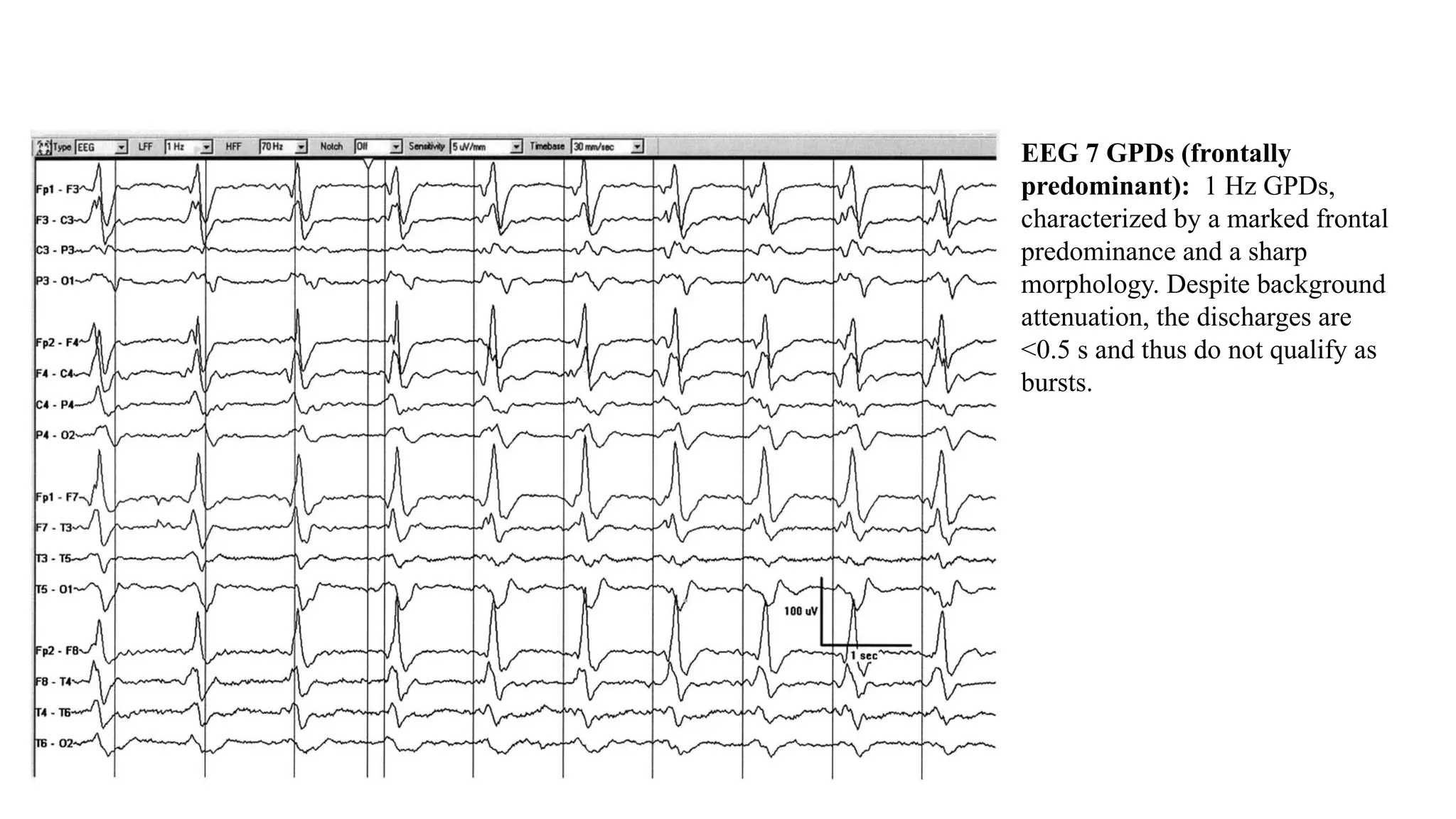

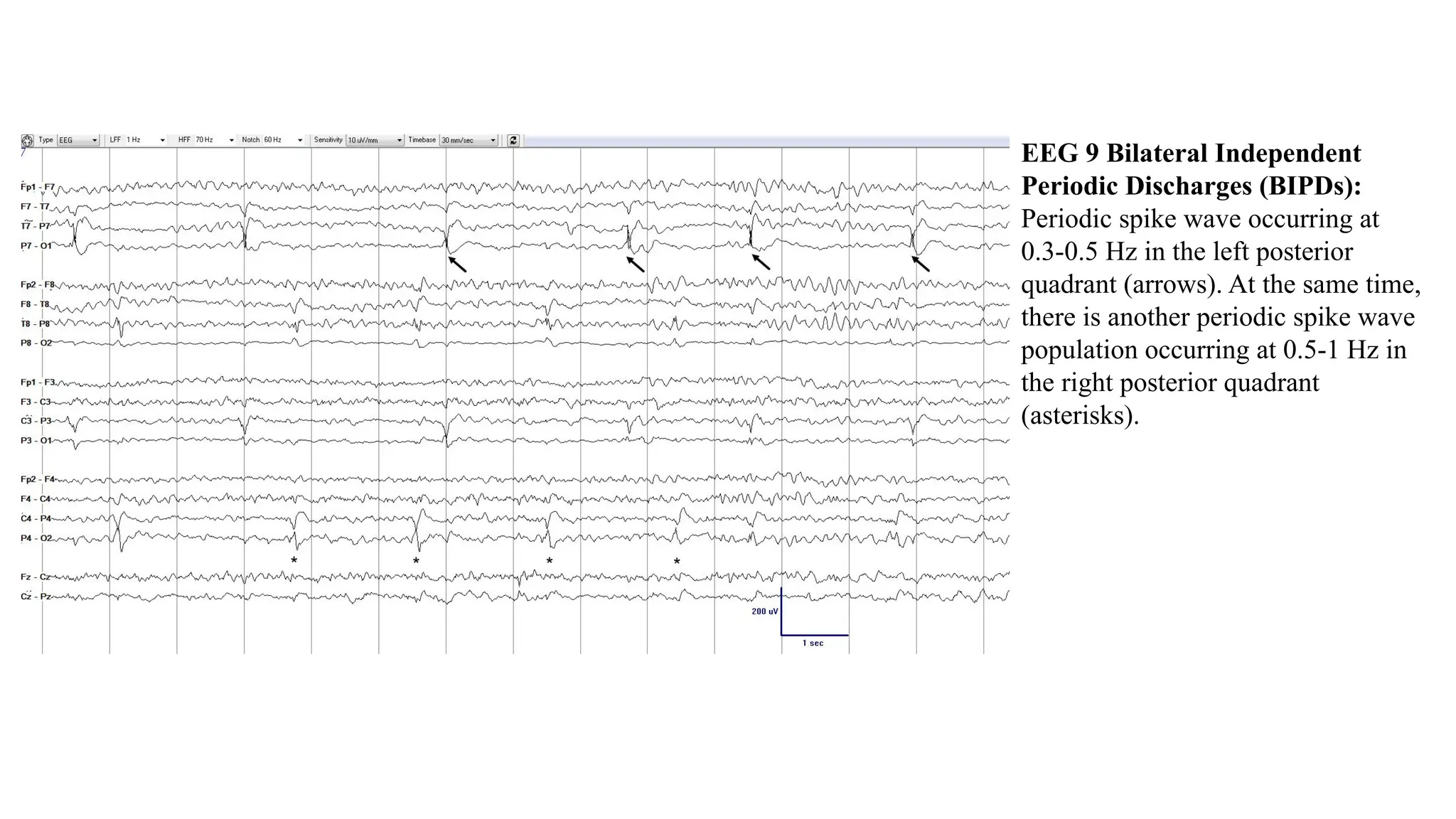




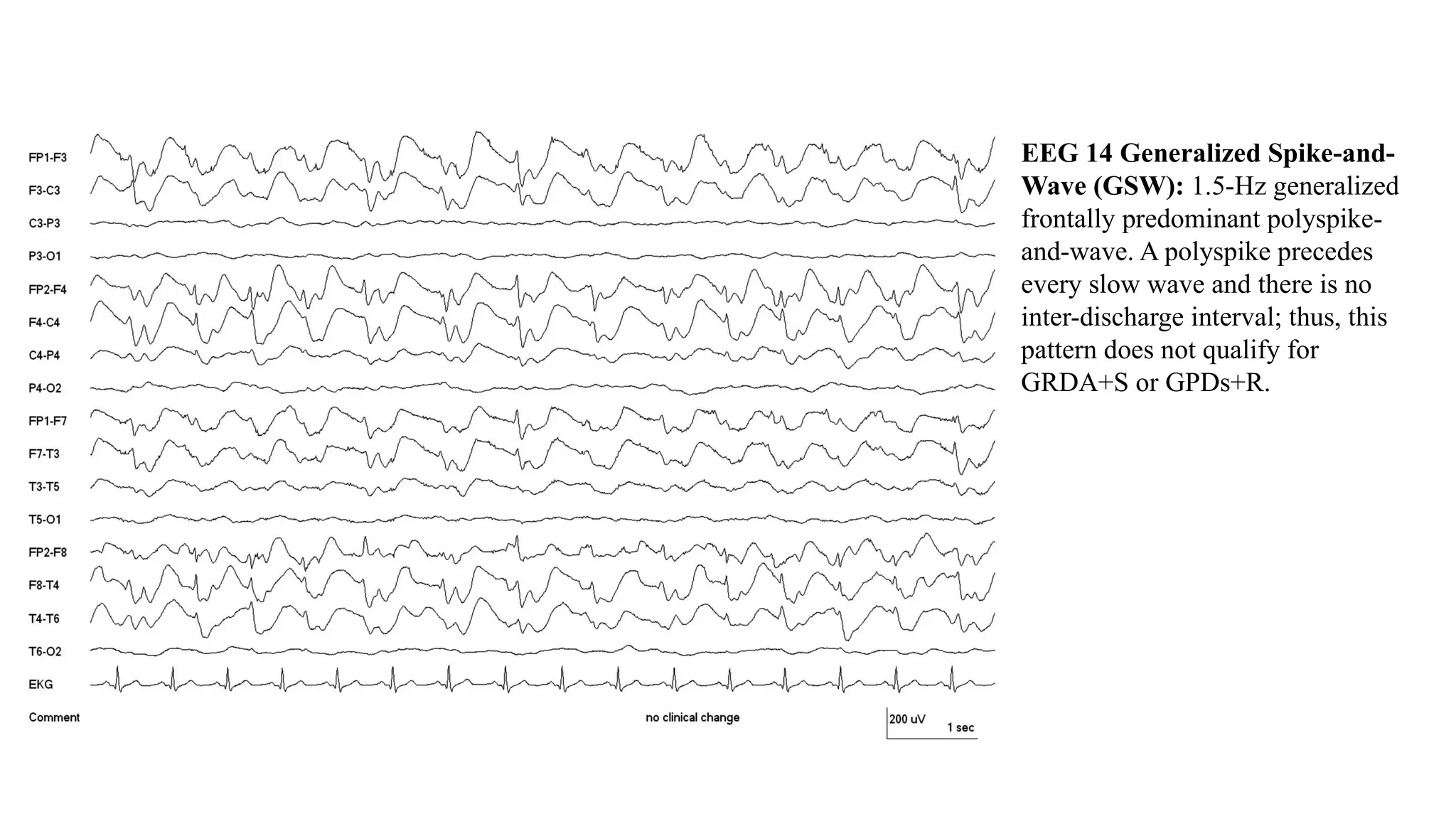
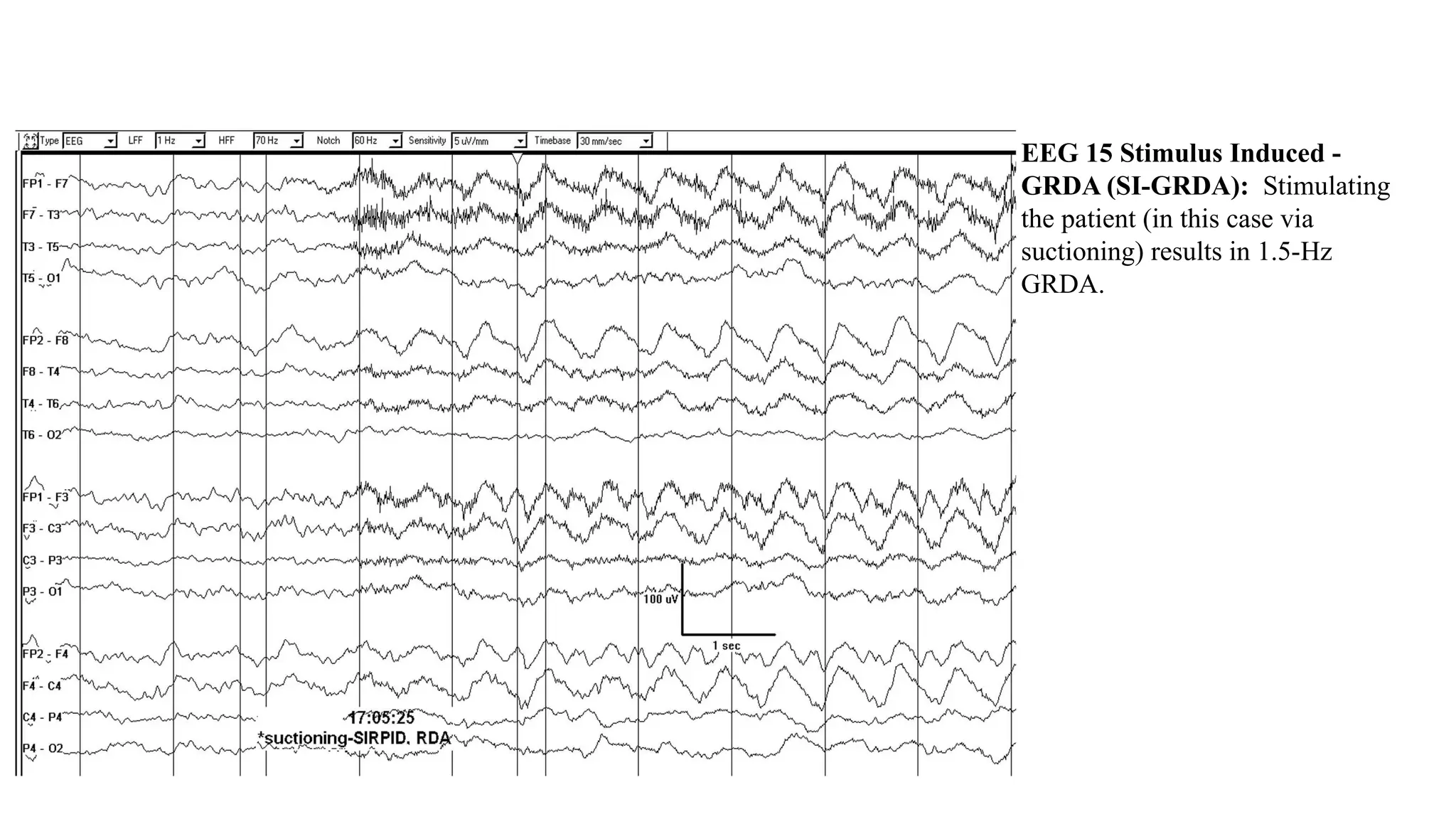






![EEG 22 Extreme Delta Brush
(EDB: 1-Hz periodic delta brush
pattern (i.e., there is a clear interval
between each consecutive delta brush
waveform). Using the current
terminology, this would be best
characterized as 1-Hz GPDs+F of
blunt morphology, where each
discharge is a delta wave. Fast
activity occurs in a stereotyped
relation with each delta wave (in this
case at the crest and on the
downslope [ellipses]). This is better
seen in the blown-up section of the
EEG in the box. If this pattern were
abundant or continuous it would be
definite EDB, but if only occasional
or frequent it would be possible EDB.
Courtesy of Dr. Nicolas Gaspard.](https://image.slidesharecdn.com/jcnp20201120fong1sdc1-240414123847-d9671562/75/ACNS-Standardized-Critical-Care-EEG-Terminology-2021-23-2048.jpg)

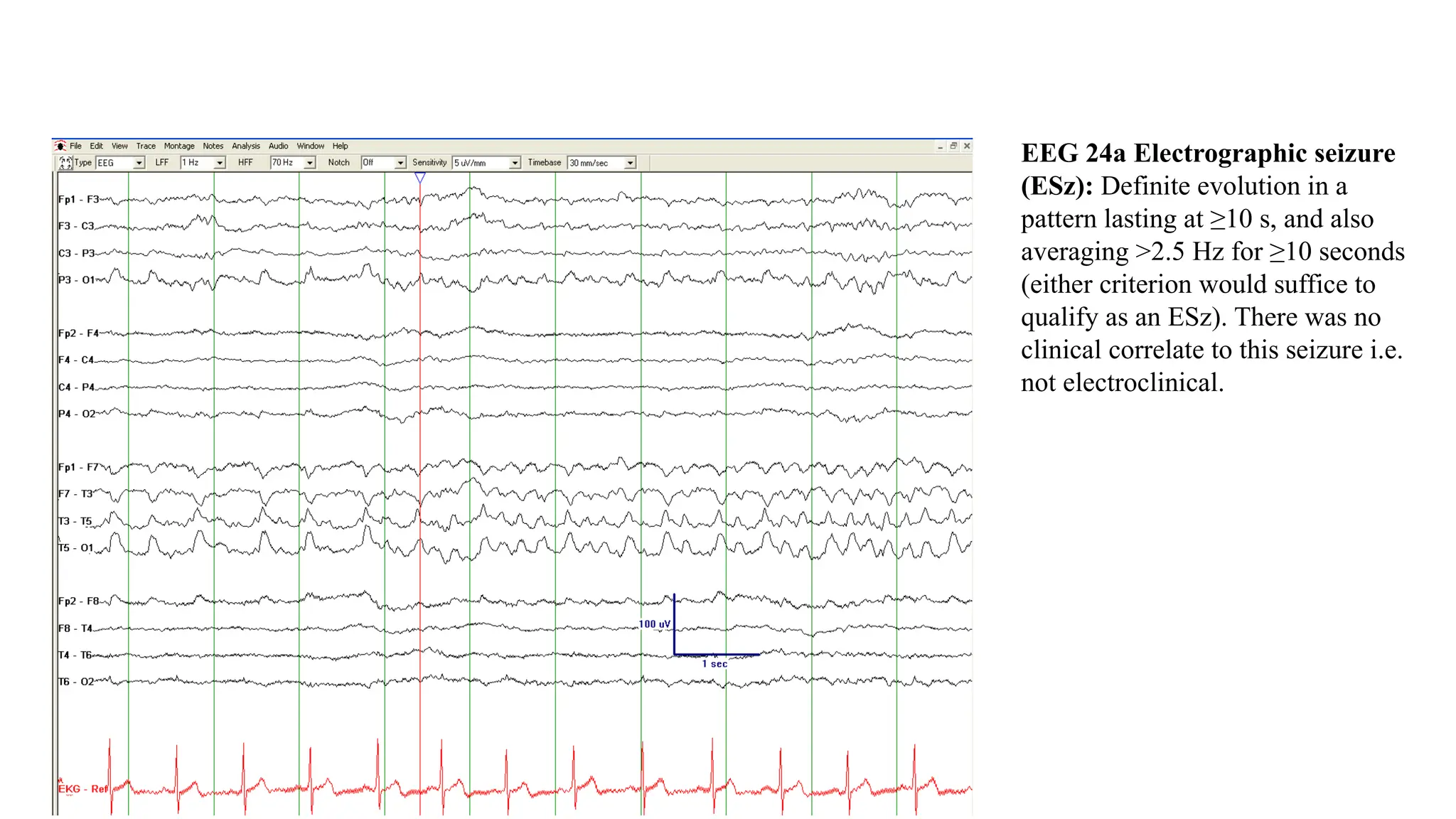


![EEG 25 Electroclinical seizure
(ECSz): The spike and polyspike
pattern at C3 is associated with right
hand twitching (EMG trace at the
bottom of the page). [From Hirsch
LJ, Brenner RP. Atlas of EEG in
Critical Care. London: Wiley, 2010.
With permission.]](https://image.slidesharecdn.com/jcnp20201120fong1sdc1-240414123847-d9671562/75/ACNS-Standardized-Critical-Care-EEG-Terminology-2021-28-2048.jpg)
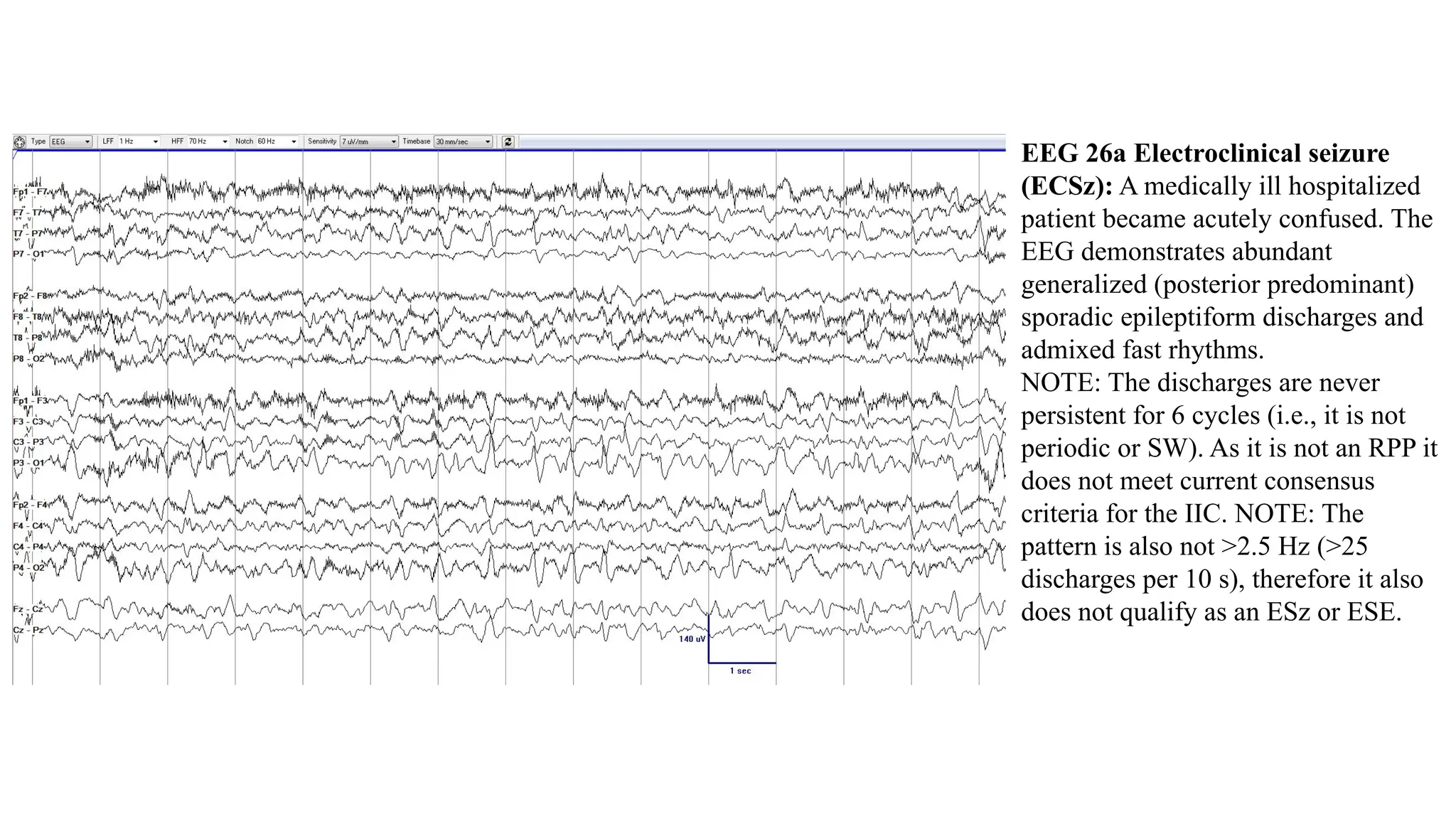
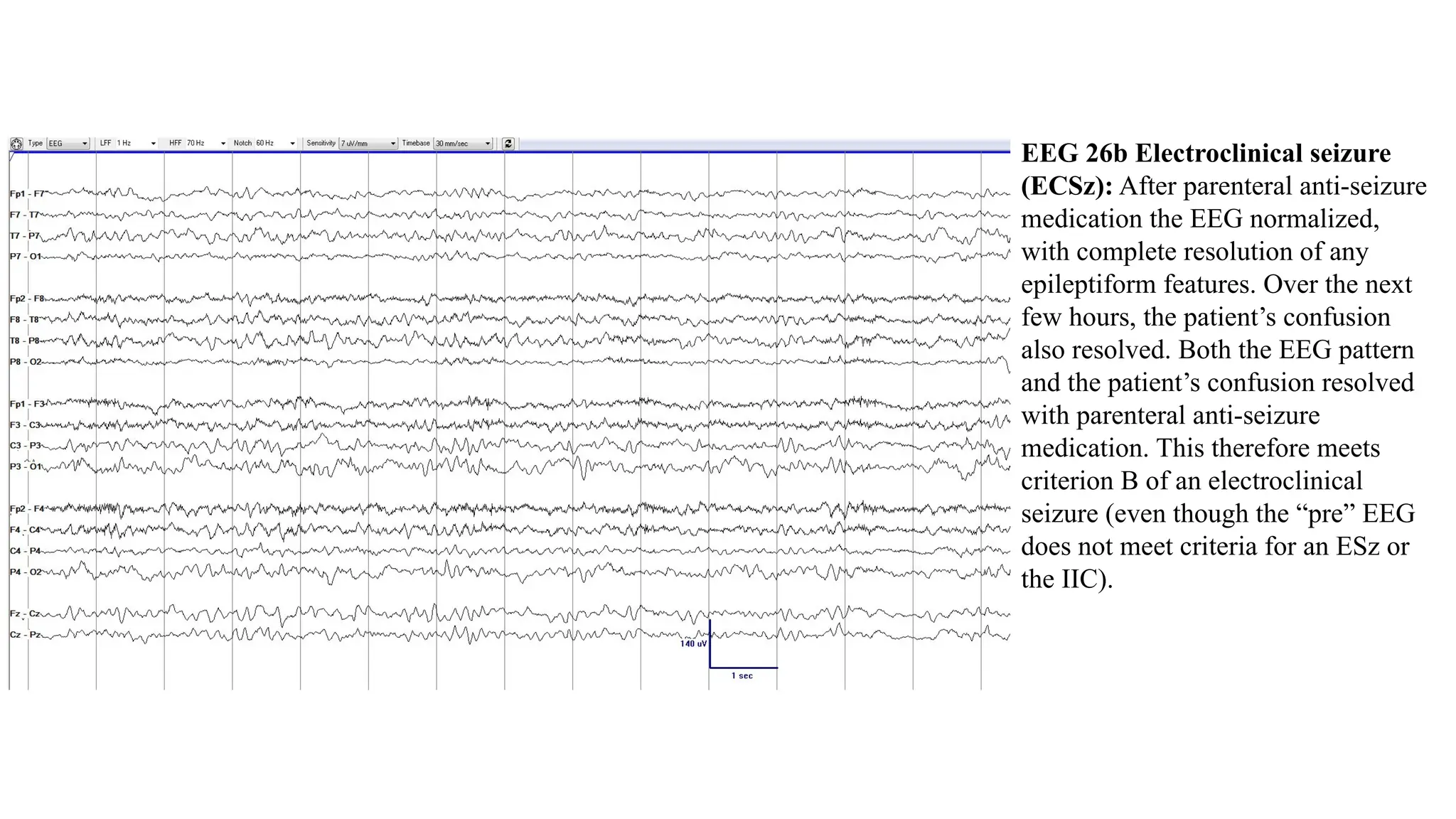
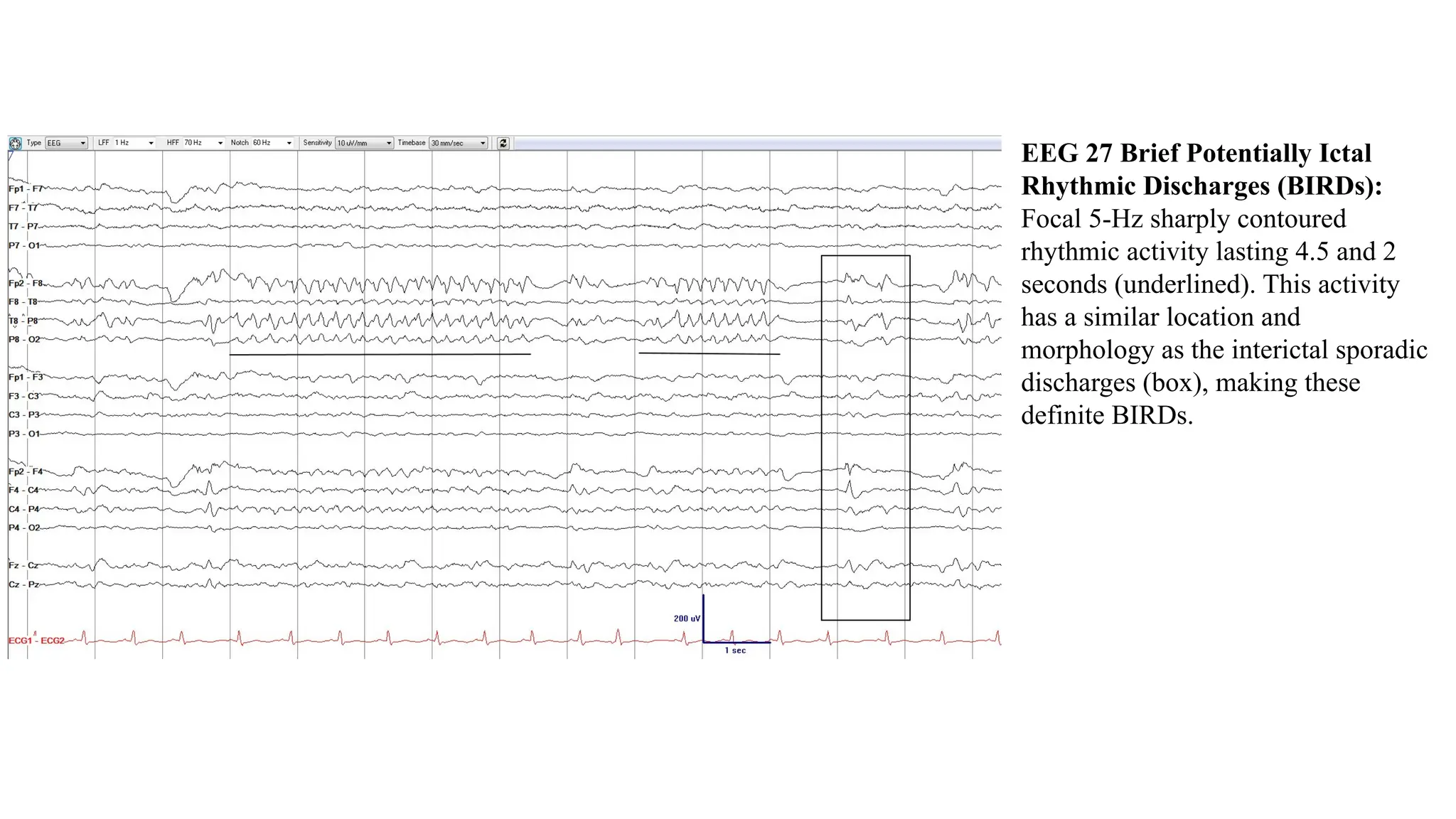
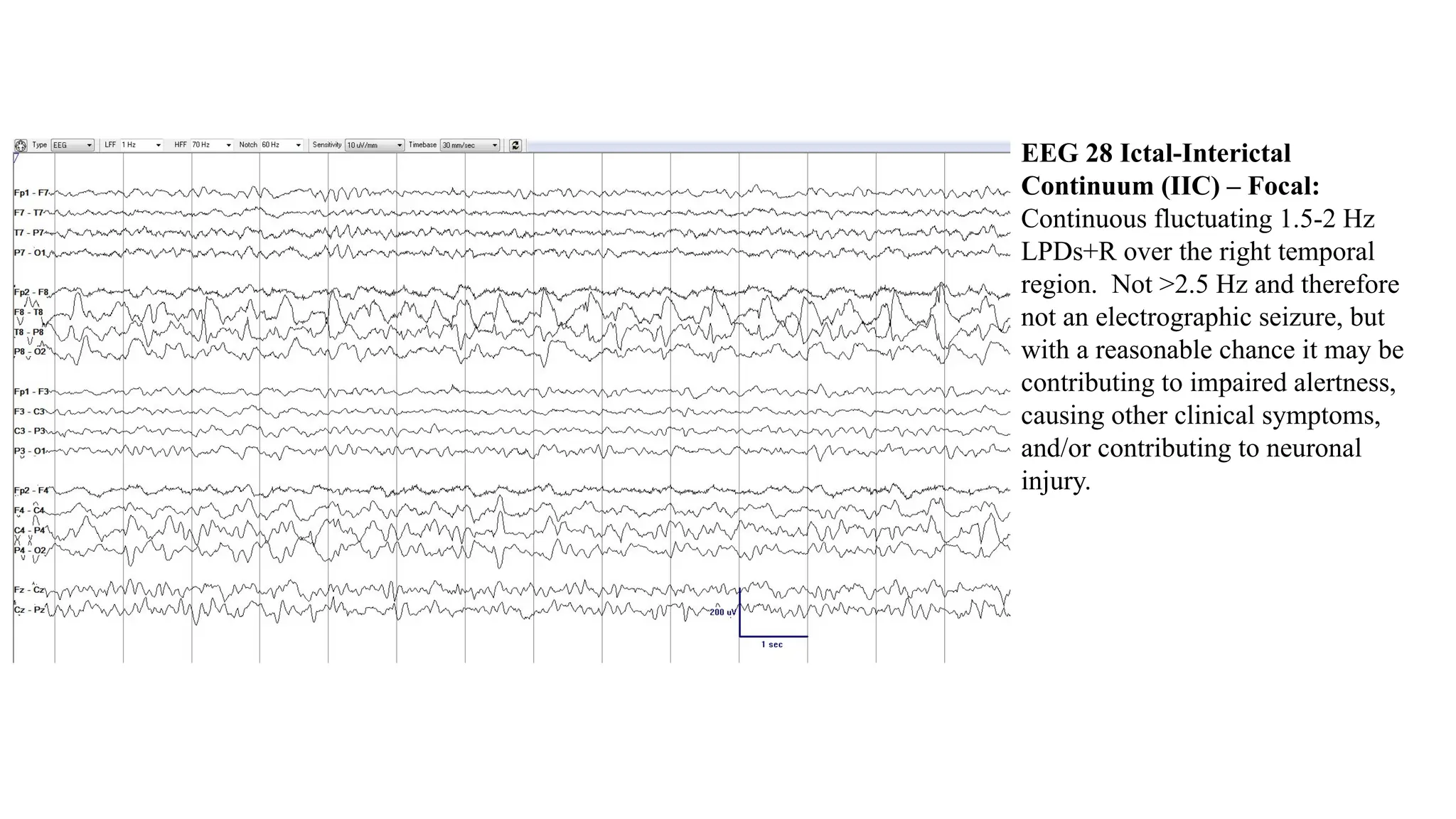
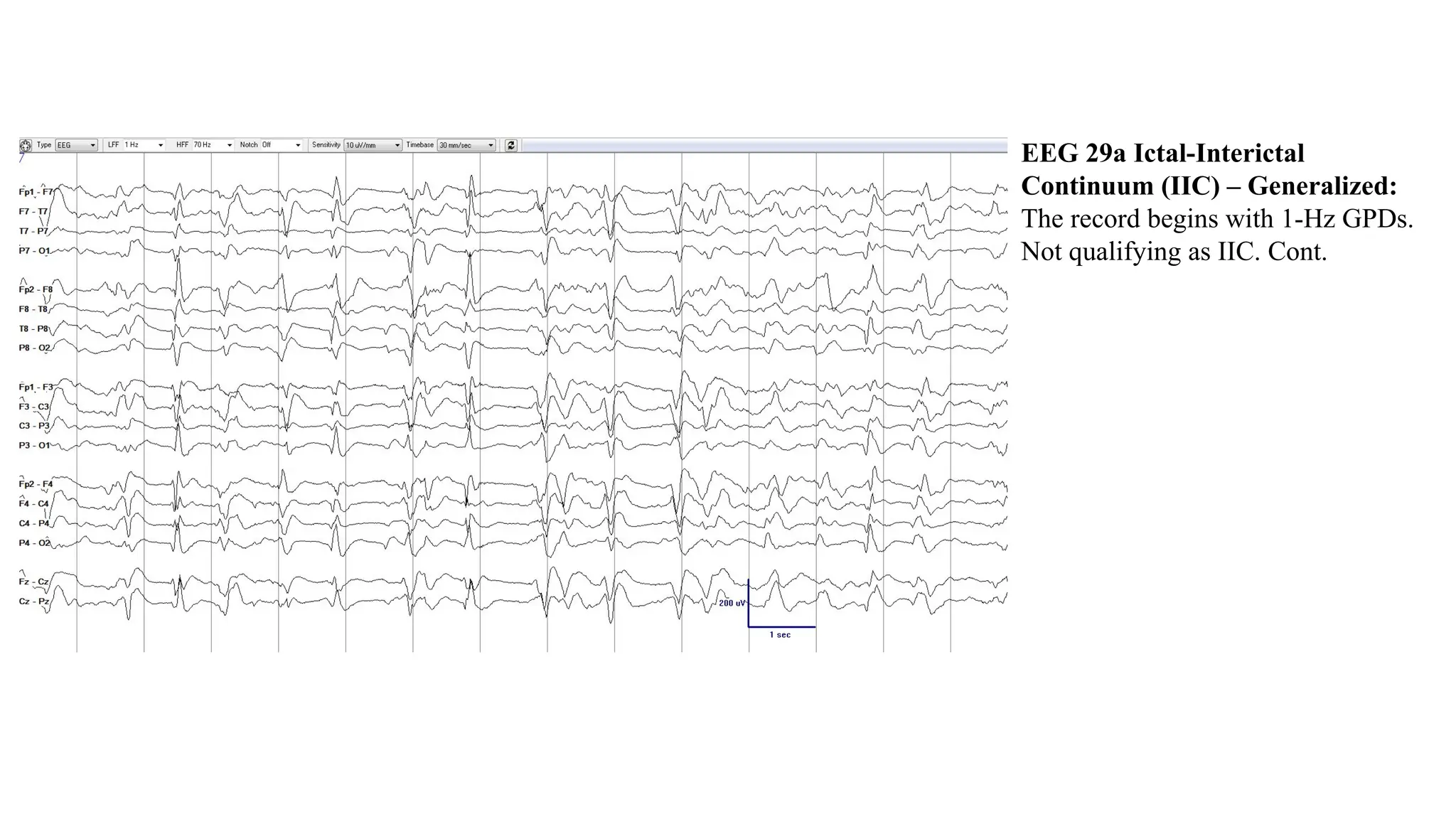

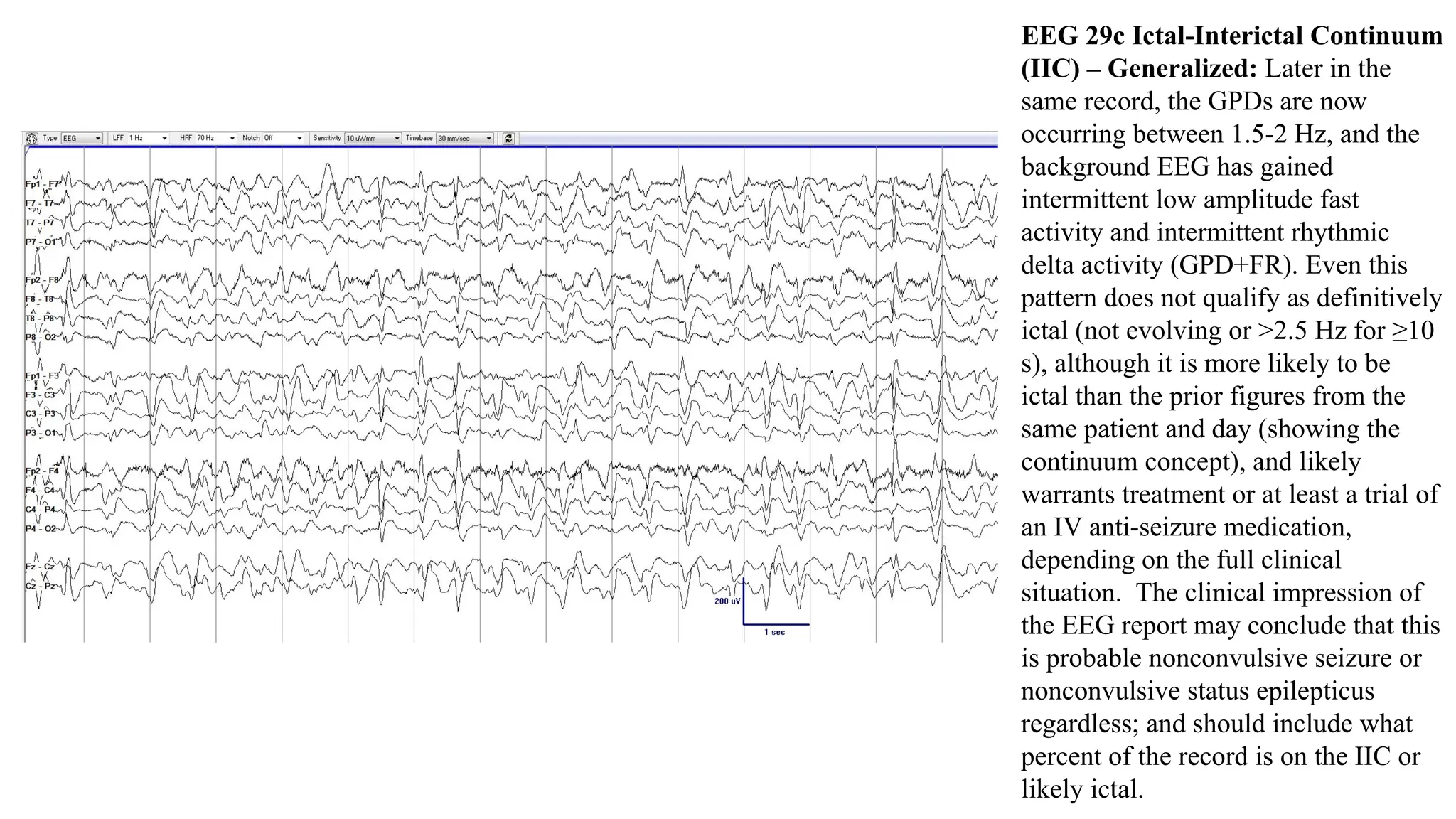
![EEG 30 Ictal-Interictal Continuum (IIC) with Quantitative
EEG (QEEG). The figure demonstrates the concept of the IIC.
Panels A and B show the Color Density Spectral Array (CSA)
for the left hemisphere (A) and the right hemisphere (B). The
CSA displays EEG power by frequency band. The y axis is
frequency (from 0 to 30 Hz), the x axis is time (in this case
showing a 12-hour trend). The amount of power at each
frequency is demonstrated by the intensity of the color on a Z
scale. If there is no power the QEEG is black, through to high
power, which demonstrates intense red then pink and white
colors. The QEEG demonstrates that over the 12 hours of the
recording the power in each hemisphere is slowly and gradually
reduced across all frequencies. Panel C shows the EEG at the
respective time points (arrows). Near the beginning there are 1-
1.5 Hz posterior predominant GPDs with fast and rhythmic
activity (GPD+FR), high amplitude (note the 15 uV/mm
sensitivity), a pattern on the IIC, not qualifying as definitively
ictal, but interpreted (clinical impression) as probable
nonconvulsive status epilepticus. By the end of the recording
the periodic pattern, fast activity and rhythmicity have resolved,
now only demonstrating diffuse dysfunction with abundant
sporadic epileptiform discharges (clearly not ictal, and not on
the IIC). The middle panel shows a state in between the two.
The cutoff point where the highly epileptiform patten becomes
“interictal” is not easily defined. This demonstrates the concept
of the IIC, a spectrum of EEG findings from interictal to
potentially ictal, at times progressing into definite
electrographic seizures and status epilepticus. There is no
abrupt transition between ictal and non-ictal, but rather a
gradual continuum. [Adapted from Hirsch LJ, Brenner RP.
Atlas of EEG in Critical Care. London: Wiley, 2010. With
permission.]](https://image.slidesharecdn.com/jcnp20201120fong1sdc1-240414123847-d9671562/75/ACNS-Standardized-Critical-Care-EEG-Terminology-2021-36-2048.jpg)